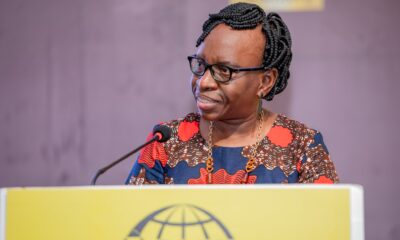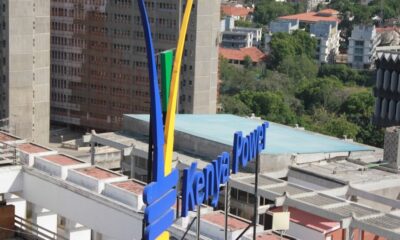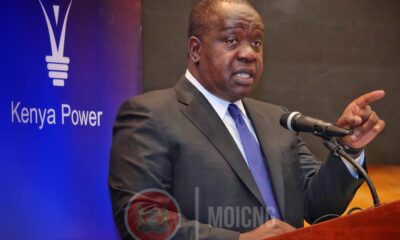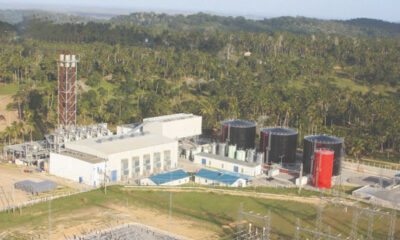Economy
Fleecing KPLC: US Authorities Alarmed Over Extraordinary Profits Made By Ormat From Struggling KPLC
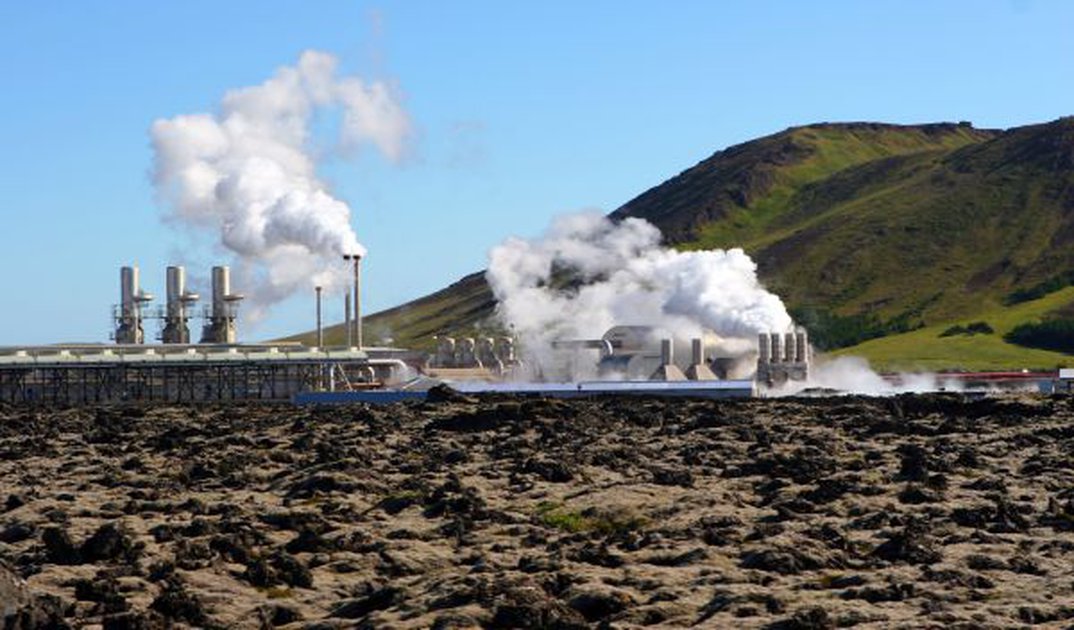
American Independent Power Producer (IPP) Ormat Power is on the spotlight in the US for booking outsized gains from Kenya, just days after the President appointed a taskforce to investigate power producers.
The company’s filings to the Securities Exchange Commission of the United States of America says a huge percentage of income comes from Kenya Power. The utility firm has been struggling to pay Ormat and as of July 2021, it owed the independent producer Sh4.3 billion.
“A substantial portion of international revenues came from Kenya and, to a lesser extent, from Honduras, Guadeloupe and Guatemala and other countries. Our operations in Kenya contributed disproportionately to gross profit and net income,” the energy firm said in SEC filings.
Profitable firms
The company earns twice more than Kengen per megawatt hour. The taskforce investigating power prices advised that all IPPs should slash their tariffs to match state owned Kengen. Kengen is one of the most profitable firms in the region.
An analysis by the Wall Street Journal owned newsletter Daily Grant says, “ultra premium represents the secret sauce of that windfall. Zachary Truesdell the former MD at Matador Global Management estimated to Grant last year that Ormat earned $94 per megawatt/hour of power provided to Kenya Power, more that double the $45 paid to Kengen.”
In the SEC filings, the company acknowledges receiving a letter from Kenya’s Parliament to explain the nature of its dealings with Kenya Power, but says it was not about negotiating tariffs.
“In July 2021, Ormat received a letter from the Kenya National Assembly with a request to respond to various questions and to provide materials regarding our Olkaria complex operations and its PPA. Ormat is engaged in conversations with the Kenya National Assembly to respond to their requests,” said Ormat to the US regulator and investors.
This web of activities and pricings are an eye opener into how private and foreign players could be charing consumers of their hard earned money through ultrahigh power tariffs.
The company’s revenue from Kenya has improved from 15 per cent of total revenue last year to 17.5 per cent of the total revenue in 2021. “As of June 30, 2021, the amount overdue from KPLC in Kenya was $43.5 million of which $13.2 million was paid during July 2021. These amounts represent an average of 77.2 days overdue,” the SEC files say.
Ormat said it believes it will be able to collect all unpaid revenue in Kenya. This belief, it says, is supported by the fact that in addition to KPLC’s obligations under its power purchase agreement, the company holds a support letter from the Government of Kenya that covers certain cases of KPLC non-payment. This includes cases such as where caused by government actions/political events.
Fixed payments Additionally, the company continued to experience certain curtailments in the first and second quarters of 2021 by KPLC in the Olkaria complex. The impact of the curtailments is limited given that the structure of the PPA secures the vast majority of the Company’s revenues with fixed capacity payments unrelated to the electricity actually generated.
Due to the high amounts paid to IPPS and high system loses, Kenya is grappling with sky-high electricity prices that continue to keep the cost of living high, while pushing investors out of business which in turn keeps unemployment high.
In an interesting twist in the sector however, Kenya Power announced last week that it has bounced back to profitability, with Sh1.5 billion in net earnings for the year ended June 30, 2021 compared to a Sh939 million loss last year.
A detailed analysis from the grants is as below;
Clean energy is a relative term. Let’s review the peculiar case of Ormat Technologies, Inc. (ORA on the NYSE), the 56-year old, Nevada-based firm that manufactures and installs small geothermal power plants.
As geothermal energy is both far greener than conventional fossil fuels and represents a reliable, baseload power source (unlike intermittent wind and solar energy), the company is a darling of the prospering environmental, social and governance-focused investment movement.
Fleecing KPLC: US's Ormat Technologies charges "ultra premium" $94 per Mega WattHour (MWh) for power it sells to KPLC, which is twice $45 Kengen charges; both generate geothermal power in Olkaria. It admits GoK has not approached it for negotiation. Shame! @StateHouseKenya https://t.co/xnvVT9HDda
— Billow Kerrow (@BillowKerrow) October 31, 2021
Ormat is ranked in the 77th percentile of CHub’s ESG ratings aggregate of 25,208 companies compiled by 787 data sources, topping the average rating of its alternative energy peers, while
Morningstar bestows a “low” ESG risk rating on the company. ORA is likewise the apple of Wall Street’s eye, trading at 50 times consensus estimates of 2021 earnings per share and six times expected full-year revenues.
Shares are, however, up just 5% including dividends since Grant’s Interest Rate Observer had its bearish say back on March 6, 2020. Over that time, the S&P 500 has returned 56%.
The starring role of Kenyan operations in the Ormat story presents a major potential vulnerability. Namely, Kenya delivered 16.4% of revenues through the first six months of 2021, up from 15.7% in the year ago period, and “contributed disproportionately to gross profit and net income,” notes Ormat’s most recent
form 10-0 filed in early August.
Ultra-premium pricing may represent the secret sauce for that windfall. Zachary Truesdell, then managing-partner at Matador Global Management, estimated to Grant’s last year that Ormat was earning around $94 per megawatt hour (MWh)
of power provided to local customer Kenya Power & Lighting Co. (KPLC), morethan double the $45 MWh rate for state-owned geothermal competitor Kenya Electricity Generating Co.
That disparity has drawn some unwanted attention. This spring, Kenyan President Uhuru Kenyatta convened a task force to scrutinize all power purchaseagreements involving Kenya Power, following the revelation that independent
power producers (IP’s) were enjoying rates far above those charged by the KenyaElectricity Generating Co. Upon the completion of that review last month, Kenyatta ordered the halt of all power purchase agreements still under negotiation and established a team of auditors to supervise KPLC, while replacing the country’s energy minister. Energy costs in the country will drop by as much as 33% thanks to those enhanced controls, Kenyatta’s office asserts.
In its 10-Q filing, Ormat acknowledges receiving a letter from the Kenya National Assembly in July requesting information and materials related to its business practices there. For its part, Ormat tells Almost Daily Grant’s that it has not been approached by the Kenyan government regarding a renegotiation of its rates, and that its prices are
“significantly’ ” lower than those charged by other firms in Kenya.
Operational risks extend beyond the durability of that lucrative Kenya-based revenue stream. As that 2020 Grant’s analysis pointed out, chairman Isaac Angel served as CEO of Lipman Electronics Engineering Ltd. prior to its 2006 acquisition by Verifone Holdings, Inc. for $793 million in cash and stock. Thanks in part to financial irregularities at Lipman, Verifone was subsequently forced to
fork over $95 million in a class action lawsuit, a setback which led to the resignation of Verifone’s CFO.
Then, too, current Ormat CEO Doron Blachar previously served as chief financial officer at Israeli construction firm Shikun & Binui, a company that is now under formal police investigation for bribery. That inquiry is reportedly focused on Kenya and Guatemala, two of Ormat’s most important markets.
A March 1 analysis by Hindenburg Research alleges that the company routed energy assets through Guatemala via an undisclosed related party, which in turn transferred energy rights to the two senior government officials who approved
Ormat’s deal to operate in the country. While the company website boasts that its geothermal plants are “powered by nature,” Ormat’s “lucrative international contracts appear to be powered by a slew of payments to senior government
officials,” Hindenburg writes.
In March, the company condemned Hindenburg’s report as “inaccurate and filled with innuendo in an attempt to mislead investors about Ormat.” Apart from those allegations, a report last year from local news service NewsZetu asserted that Kenya Power is “broke,” and “technically insolvent,
.” as net profits collapsed by 92% over the 12 months through June 30, 2019 compared to the
prior year period. The slow-paying KPLC owed Ormat about $30 million as of the end of July, the 10-Qnotes. That’s equivalent to 37% of 2021 consensus net income.
Billow Kerrow the former Senator of Mandera has termed it as a “Shame and fleecing Kenyans.”
In a previous article we did on Kenya Insights and in which we largely relied on the Hindenburg damning report, Ormat came at us with legal demands claiming the publication had some errors, they however didn’t dismiss the entire content.
In the Hindenburg Report titled ‘Ormat: Dirty Dealings in ‘Clean’ Energy’ it made damning allegations on the firm’s operations in Kenya saying that;
- Ormat’s operations in Kenya contribute “disproportionately” to the company’s bottom line, generating an estimated ~41% of the company’s FY 2020 net income. Its customer is the Kenya state power company.
- A politically-connected businessman admitted to us that he “opened the doors” for Ormat in Kenya and got the go-ahead for the project after an in-person meeting with the Kenya Power boss (who was later charged with corruption) and former President Daniel Arap Moi, widely regarded as one of Kenya’s most corrupt leaders.
- We present documents showing that Ormat paid contractors in Kenya tied to corrupt government officials, including one run by the son of the former President Daniel Arap Moi along with others run by his documented front-men.
- The head of the Kenyan state-backed utility who oversaw the original contract with Ormat, as well as the energy minister at the time, were later found to have demanded millions of dollars in bribes to allow international power companies to do business in Kenya.
- Two former CEOs of Ormat’s Kenyan customer (the state-backed utility) were subsequently arrested in 2018 and more than a dozen top managers were arrested or accused of crimes relating to corruption.
- The same state utility customer, responsible for driving Ormat’s “disproportionate” financial success in the country, is reportedly “broke” and “technically insolvent”, posing another threat to Ormat’s most lucrative market.
In sharp reaction, Ormat denied the accusations in a letter to Kenya Insights, “unsupported contentions about third parties such as the “Mugwe firm” and its portfolio, former and current Kenyan presidents and their purported associates, and KPLC managers. These statements are a blatant attempt to sully Ormats reputation through “innuendo” and misleading reporting.”
Ormart dismissed the allegations against them in the report terming it as a mere “opinion paper” that intends to influence and manipulate the price of a listed stock.
In their letter, Ormat demanded we publish the following, “Ormat’s Olkaria facility in Kenya is the first and only privately funded and developed geothermal project in Kenya. The project was developed consistently with best market practices at the invitation of the Kenyan government. This project has been widely applauded as a successful
major Kenyan achievement that has resulted in competitively priced renewable energy. The Company is committed to operate with full transparency with all governmental agencies and
conducts business with integrity and according to the highest ethical standards in all regions in which it operates.”
Kenya Insights complied with the demands and gave the firm a right of reply to the report and allegations. In a letter to Ormat, we asked pertinent questions;
Letter to Ormat
For clarifications so that we don’t have to clash again, the editorial will need answers to some questions that perhaps laid ground for the previous ‘misunderstanding’ so kindly pass over the following questions to your client as we have assigned another writer to follow up on this story that we shall publish as a retraction for the previous. Note that our concern is OrPower is at the center of investigations by the parliament and in the good of public, a whole story need to be told not just a PR article:
1. Block & Leviton LLP, a US national securities litigation firm, in March announced that it is investigating Ormat Technologies, for potential violations of the federal securities laws. What’s the reaction to this?
2. Hindenburg Research said Ormat paid contractors in Kenya tied to corrupt government officials. The report widely accuses the management of links to corruption and bribery not only in Kenya but other countries as Honduras. We’d like to get the overall view of the company on this particular report and more specifically to the Kenyan context.
3. OrPower has been accused of exploiting Kenyans with exorbitant prices. For instance, it’s alleged that KPLC buys Sh23 per kilowatt hour yet it can buy the same at Sh0.50 from KenGen. Infact, some are saying that it’s a possibility that cartels in the sector are purchasing power from KenGen at Sh0.50 and offloading to Kenya Power at Sh23. Is this a fact? If so what’s the justification for the high price and direct answer to those claiming it’s exploitation given that Ormat is the second largest producer after KenGen.
4. Recent losses at Kenya Power and expensive electricity bills to consumers have shifted focus to lucrative deals signed between Kenya Power and IPPs. Do you think as a producer this is where the back lay?
5. We’re requesting for the details of operations at Olkaria and agreements or any other relevant document you can avail to us as a matter of openness and integrity.
6. Is it true that the US department of justice is investigating unfair pricing between Kenya Power and Ormat Technologies which was allegedly forwarded by OECD?
Worthy to note that, we sent the letter on 29th September and a month later and as of the time of publication, we haven’t gotten a reply from Ormat and we can’t tell why they decided not to reply.
While Ormat distance themselves from bribery allegations, in Kenya some state officials are bragging of having given them a life kick. Disgraced former Geothermal Development Company (GDC) CEO Dr Silas Masinde Simiyu who was also accused of abuse of office and failing to ensure proper management of public funds and fired, has been bragging to anybody who cares to listen that he was behind the successful tendering of Orpower 22 Limited, Sosian Menengai Geothermal Power Limited and Quantum East Africa Power Limited for the Menengai Geothermal Project.
The Kenya Power and Lighting Company PLC (Kenya Power) recently announced a profit before tax of Kshs.8.2 billion for the period ending 30th June 2021, representing a 216% YoY growth compared to a loss before tax of Kshs.7.04 billion. The strong performance was mainly driven by growth in sales and revenue, as well as a double digit reduction in costs and expenses.
In the immediate to medium terms, Kenya Power is undertaking deep seated reforms aimed at driving down the cost of power to the end consumer in order to spur social and economic growth, make the business more efficient and agile, and the energy sector more sustainable.
“The Board recognised that a continued unbalanced approach towards power purchase agreements posed a systemic risk to the sector and the economyas a whole while exposing consumers to high electricity bills. In mitigation, it undertook a collective stakeholder approach to resolve these issues which resulted in the report of the Presidential Taskforce on the Review of Power Purchase Agreements which has made far reaching recommendations which we have started implementing,” noted the Chairman of the Board of Directors, Vivienne Yeda.
The task force unearthed how Kenya was getting ripped off by IPPs.
Electricity consumers in Kenya have been paying heavily for the weakening shilling, the latest review of Power Purchase Agreements (PPAs) shows.
The report by a presidential task force to look into power deals between Kenya Power and Independent Power Producers (IPPs) shows the country is paying Sh31 more per dollar for a deal entered when the US currency was trading at Sh72 in 2001.
”Most of the PPAs executed between the off-taker and IPPs in the country are denominated in foreign currency,” the detailed report reads in part.
According to the task force set up by President Uhuru Kenyatta, the government bears the responsibility to make dollars or euros available, while the off-taker covers any exchange rate fluctuation risks as well as inflation, by passing the additional cost to the consumer.
For instance, Tsavo Power signed a dollar-denominated power agreement with Kenya Power in 2001. The currency was trading at Sh72. Today, the dollar is trading at a high of Sh111, Sh29 more.
The deal between the two companies, however, expired last month.
Rabai Power on other hand is now earning at least Sh22.40 more per dollar for the deal signed in May 2010 when the US dollar was trading at 107.63.
The contract which expires in May 2030 means the power producer is likely to reap more as the shilling slides further against the US dollar. The shilling was trading at Sh111 on Monday.
Ormat is also under the same exchange program.
Kenya Power is currently forced to shoulder an extra Sh7.60 per dollar to repay the power producer. This is likely to increase as the shilling further drops against the greenback.
According to the report which is now under implementation stage, the life of a PPA averages 20 years and the exchange rates between the Kenya shilling and the US dollar/Euro is bound to change significantly over the twenty (20) years.
The task force has recommended renegotiation of some of the power deals, suspension of expensive ones, and termination of ongoing negotiations.
The report calls for a need to develop locally denominated PPAs to promote use and adoption in local power contracts.
”The Taskforce recommends that all future PPAs should be denominated in Kenya Shillings. Stability of local currency will enhance bankability of projects,” the report reads.
It adds that a monetary policy implementing agency will be required to ensure stable macroeconomic stability to avoid fluctuations in the local currency and erosion of the real value of money.
ODM leader Raila Odinga has called on the government to review contracts between Kenya Power and independent power producers (IPPs).
Speaking in Naivasha yesterday after a meeting with local leaders, Raila said the only solution in addressing the high cost of electricity in the country lies in reviewing all power contracts between the utility company and the independent producers.
The former premier accused the independent power suppliers and unnamed individuals of fleecing the country through expensive deals signed in unclear circumstances.
Part of the recommendations in the John Ngumi led report by the, Presidential task-force on Power Purchase Agreements is that power purchase agreements with especially both diesel and renewable energy producers is that their tariffs should match Kengen tariffs.
Matching Kengen tariffs means that most of them will slash their tariffs by half. However Kengen is one of the most profitable companies in Kenya and in the region, meaning the proposal is not that bad.
Kenya Insights allows guest blogging, if you want to be published on Kenya’s most authoritative and accurate blog, have an expose, news TIPS, story angles, human interest stories, drop us an email on [email protected] or via Telegram
-
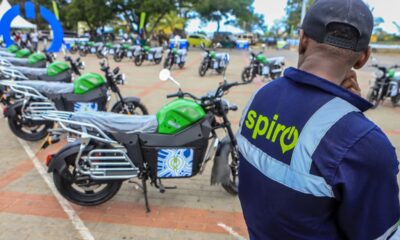
 Business2 weeks ago
Business2 weeks ago‘They’re Criminals,’ Popular Radio Presenter Rapcha The Sayantist Accuses Electric Bike Firm Spiro of Fraudulent Practices
-

 Business1 week ago
Business1 week agoIt’s a Carbon Trading Firm: What Kenyans Need to Know About Spiro’s Business Model Amid Damning Allegations of Predatory Lending
-
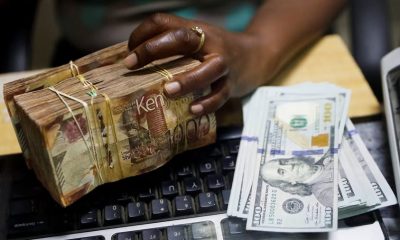
 Business1 week ago
Business1 week agoManager Flees Safaricom-Linked Sacco As Fears Of Investors Losing Savings Becomes Imminent
-
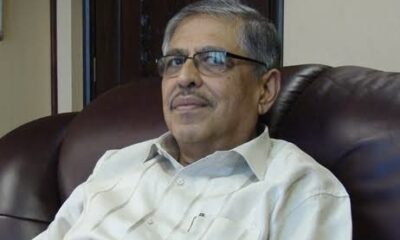
 News1 week ago
News1 week agoWoman Accused in High Defamation Blames AI As Case Exposes How Mombasa Billionaire Mohamed Jaffer Allegedly Sponsored Smear Campaign Linking Joho’s Family To Drug Trafficking
-

 Investigations2 weeks ago
Investigations2 weeks agoDisgraced Kuscco Boss Arnold Munene Moves To Gag Media After Expose Linking Him To Alleged Sh1.7 Billion Fraud
-
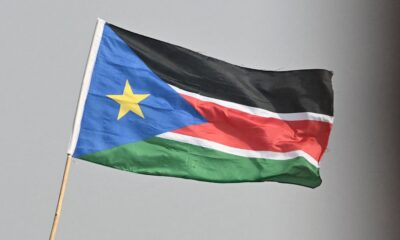
 Africa2 weeks ago
Africa2 weeks agoDisgraced Oil Trader Idris Taha Sneaks Into Juba as Empire Crumbles
-

 Investigations2 weeks ago
Investigations2 weeks agoFraud: How Sh235 Million Donor Cash For Nyamira Residents Was Embezzled Through Equity Bank Under Governor Nyaribo’s Watch
-

 Investigations1 week ago
Investigations1 week agoIntelligence Report Links Budding Politician James Mabele Magio To International Scammers Ring

